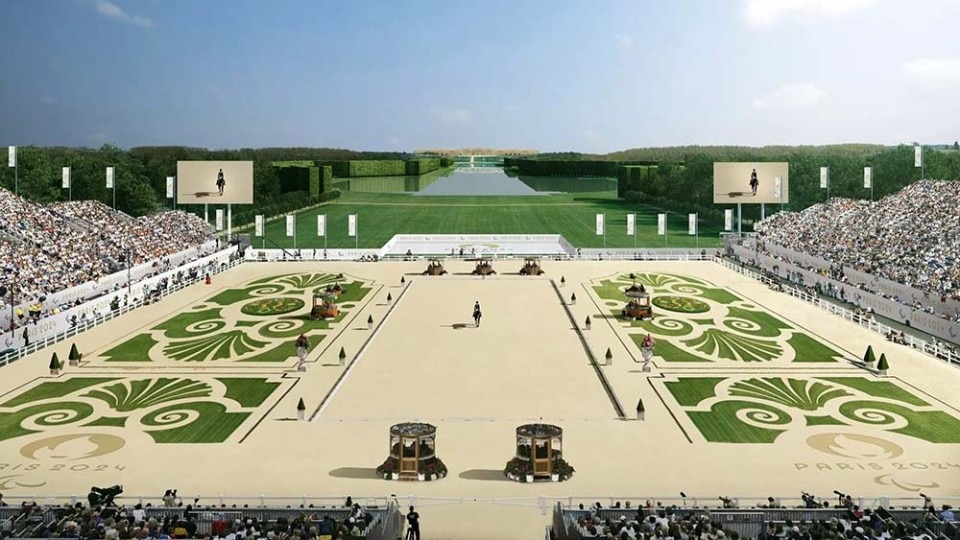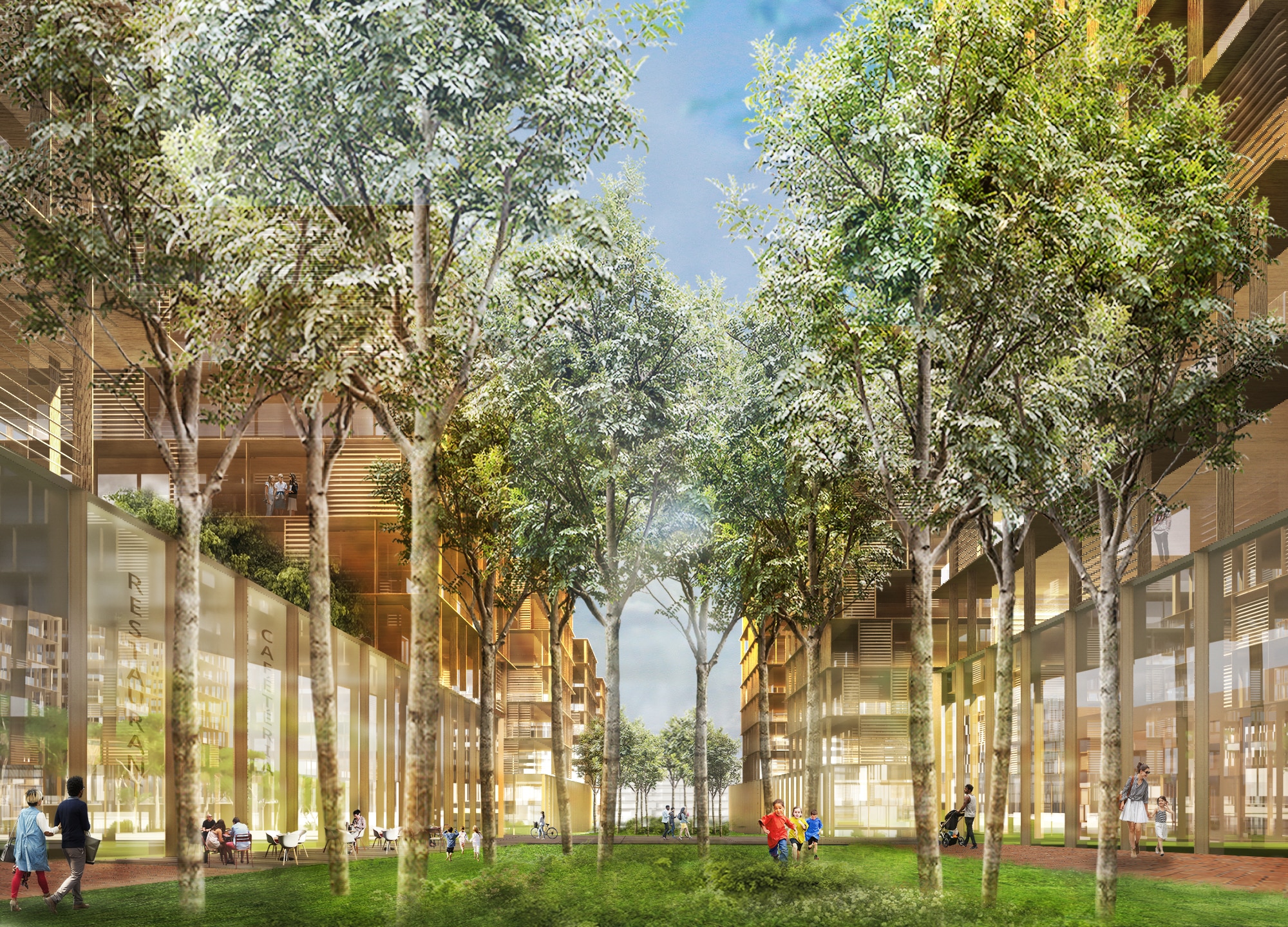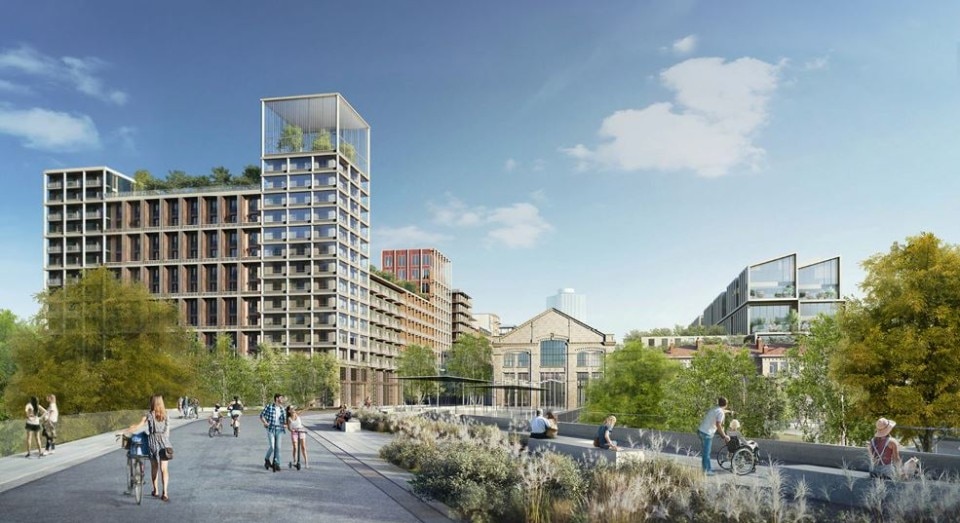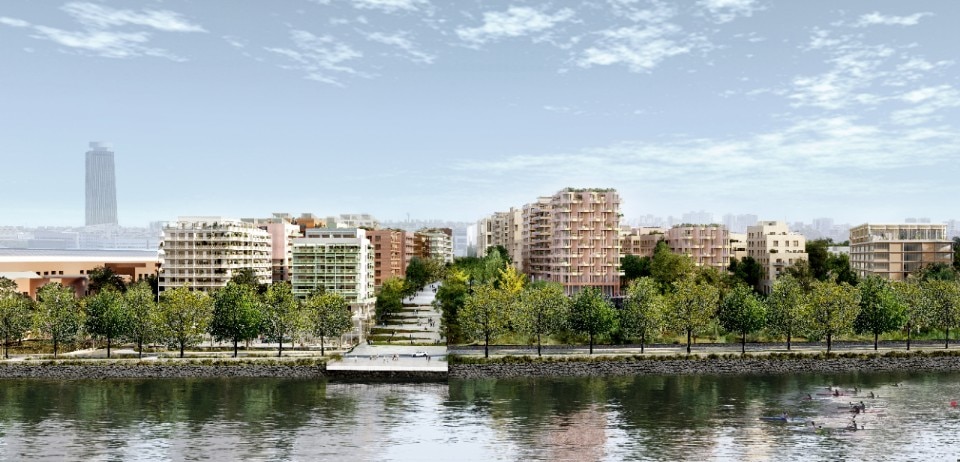“Faire plus avec moins”, doing more with less: the motto of French firm Lacaton & Vassal, winner of the Pritzker Architecture Prize in 2021, fits perfectly with the recently concluded Paris 2024 Olympics. As the first edition to break away from the centralized Olympic Park model, Paris 2024 will be remembered for its capillarization and adaptability across the city’s various sites and landmarks, and for both its sporting venues and the iconic opening ceremony along the Seine.
As the first Olympic host to implement the International Olympic Committee’s Agenda 2020, a set of guidelines for more sober Olympics, where the event adapts to the city − its economic, architectural, and social characteristics − rather than the city to the event, the Paris 2024 will be remembered for having made a significant and realistic contribution to reducing the Games’ carbon footprint.
 View gallery
View gallery

Henri Deglane, Albert Louvet, Albert-Félix-Théophile Thomas, Charles Girault, Grand Palais, Paris, 1900
Renovation Project by Chatillon Architectes, 2024. Photo Laurent Kronental

Henri Deglane, Albert Louvet, Albert-Félix-Théophile Thomas, Charles Girault, Grand Palais, Paris, 1900
Renovation Project by Chatillon Architectes, 2024. Photo Laurent Kronental

Henri Deglane, Albert Louvet, Albert-Félix-Théophile Thomas, Charles Girault, Grand Palais, Paris, 1900
Renovation Project by Chatillon Architectes, 2024. Photo Laurent Kronental

Henri Deglane, Albert Louvet, Albert-Félix-Théophile Thomas, Charles Girault, Grand Palais, Paris, 1900
Renovation Project by Chatillon Architectes, 2024. Photo Laurent Kronental

Henri Deglane, Albert Louvet, Albert-Félix-Théophile Thomas, Charles Girault, Grand Palais, Paris, 1900
Renovation Project by Chatillon Architectes, 2024. Photo Laurent Kronental

Henri Deglane, Albert Louvet, Albert-Félix-Théophile Thomas, Charles Girault, Grand Palais, Paris, 1900
Renovation Project by Chatillon Architectes, 2024. Photo Laurent Kronental

Henri Deglane, Albert Louvet, Albert-Félix-Théophile Thomas, Charles Girault, Grand Palais, Paris, 1900
Renovation Project by Chatillon Architectes, 2024. Photo Laurent Kronental

Henri Deglane, Albert Louvet, Albert-Félix-Théophile Thomas, Charles Girault, Grand Palais, Paris, 1900
Renovation Project by Chatillon Architectes, 2024. Photo Laurent Kronental

Henri Deglane, Albert Louvet, Albert-Félix-Théophile Thomas, Charles Girault, Grand Palais, Paris, 1900
Renovation Project by Chatillon Architectes, 2024. Photo Laurent Kronental

Henri Deglane, Albert Louvet, Albert-Félix-Théophile Thomas, Charles Girault, Grand Palais, Paris, 1900
Renovation Project by Chatillon Architectes, 2024. Photo Laurent Kronental

Henri Deglane, Albert Louvet, Albert-Félix-Théophile Thomas, Charles Girault, Grand Palais, Paris, 1900
Renovation Project by Chatillon Architectes, 2024. Photo Laurent Kronental

Henri Deglane, Albert Louvet, Albert-Félix-Théophile Thomas, Charles Girault, Grand Palais, Paris, 1900
Renovation Project by Chatillon Architectes, 2024. Photo Laurent Kronental

Henri Deglane, Albert Louvet, Albert-Félix-Théophile Thomas, Charles Girault, Grand Palais, Paris, 1900
Renovation Project by Chatillon Architectes, 2024. Photo Laurent Kronental

Henri Deglane, Albert Louvet, Albert-Félix-Théophile Thomas, Charles Girault, Grand Palais, Paris, 1900
Renovation Project by Chatillon Architectes, 2024. Photo Laurent Kronental
The Olympics: A catalyst for the local community
Far from any grandiose ambitions, Paris 2024 prioritized reusing existing infrastructure wherever possible. This strategy operated on two fronts: that of the city’s image and that serving the local communities. Events like horseback riding in the Versailles Park, beach volleyball beneath the Eiffel Tower, fencing at the Grand Palais, and skateboarding at Place de la Concorde leveraged the city’s preexisting iconic landmarks, combining recognizability with territorial promotion. The expected return on investment, for which the French government invested €2 billion out of a total €9 billion budget, extends beyond just the summer of 2024, with benefits projected to unfold over months and years.
The event adapts to the city − its economic, architectural, and social characteristics − rather than the city to the event, the Paris 2024 will be remembered for having made a significant and realistic contribution to reducing the Games’ carbon footprint.

Several public sports facilities, including five in the capital, were restored with Olympic funding, making them more modern, accessible, and energy efficient. These facilities will provide a legacy for local communities, incorporating circular practices through the reuse of debris. Additionally, cycling infrastructure received a significant boost following the promise of making the Games the first fully accessible by public transportation. While not all planned metro line extensions were completed – among the completed lines there’s line 14, which now offers direct access to Orly Airport − Paris made considerable progress in expanding its bike lanes. Looking at the bright side, the "Olympistes" circuit, a 60-kilometer bike route, connected all Olympic venues, while an additional 30 kilometers of lanes were added within Paris itself.
New facilities
Only one major sports facility, the Olympic Aquatic Center designed by VenhoevenCS and Ateliers 2/3/4/, is among the very few buildings that were built from the ground up for Paris 2024. Even this project adhered to principles of sustainability, with a focus on using organic materials, including 2,700 cubic meters of wood, and meeting high energy efficiency standards. In fact, the center is equipped with a 4,600-square-meter rooftop photovoltaic system, one of the largest in France. After its Olympic and Paralympic roles, the center will serve the local community of Seine-Saint-Denis in Paris’s northern suburbs, offering water sports and other recreational activities.

 View gallery
View gallery
The same commitment to sustainability is evident in the athletes’ village, which spans 52 hectares across the municipalities of Saint-Ouen-sur-Seine, Île Saint-Denis, and Saint-Denis, in the northern Parisian suburbs along the Ourcq Canal. Built on a partially disused former industrial site, the village’s 82 buildings, housing 14,000 athletes, prioritize long-term sustainability. Facades and parts of the structure are constructed from wood, and the buildings are designed to withstand future climatic conditions, particularly the extreme heat expected by 2050, when Paris may experience temperatures exceeding 40°C. Although the buildings are not air-conditioned, they are designed to maintain an indoor temperature of 23°C, even when it reaches 37°C outside.
Far from any grandiose ambitions, Paris 2024 prioritized reusing existing infrastructure wherever possible. This strategy operated on two fronts: that of the city’s image and that serving the local communities.

 View gallery
View gallery

Dominique Perrault Architecture, Athletes Village, Paris
Bord de Seine © Solideo, Dominique Perrault Architecte, Adagp

Dominique Perrault Architecture, Athletes Village, Paris
Coteaux © Solideo, Dominique Perrault Architecte, Adagp

Dominique Perrault Architecture, Athletes Village, Paris
Espace public © Solideo, Dominique Perrault Architecte, Adagp

Dominique Perrault Architecture, Athletes Village, Paris
Mail Finot © Solideo, Dominique Perrault Architecte, Adagp

Dominique Perrault Architecture, Athletes Village, Paris
Les Quinconces © Solideo, Dominique Perrault Architecte, Adagp

Dominique Perrault Architecture, Athletes Village, Paris
© Solideo, Dominique Perrault Architecte, Adagp

Dominique Perrault Architecture, Athletes Village, Paris
© Solideo, Dominique Perrault Architecte, Adagp

Dominique Perrault Architecture, Athletes Village, Paris
© Solideo, Dominique Perrault Architecte, Adagp

Dominique Perrault Architecture, Athletes Village, Paris
Bord de Seine © Solideo, Dominique Perrault Architecte, Adagp

Dominique Perrault Architecture, Athletes Village, Paris
Coteaux © Solideo, Dominique Perrault Architecte, Adagp

Dominique Perrault Architecture, Athletes Village, Paris
Espace public © Solideo, Dominique Perrault Architecte, Adagp

Dominique Perrault Architecture, Athletes Village, Paris
Mail Finot © Solideo, Dominique Perrault Architecte, Adagp

Dominique Perrault Architecture, Athletes Village, Paris
Les Quinconces © Solideo, Dominique Perrault Architecte, Adagp

Dominique Perrault Architecture, Athletes Village, Paris
© Solideo, Dominique Perrault Architecte, Adagp

Dominique Perrault Architecture, Athletes Village, Paris
© Solideo, Dominique Perrault Architecte, Adagp

Dominique Perrault Architecture, Athletes Village, Paris
© Solideo, Dominique Perrault Architecte, Adagp
The master plan, designed by Dominique Perrault Architecture in 2015, transcends the notion of an isolated enclave and envisions the regeneration of the area and the creation of connective infrastructure between the municipalities, including a section on Île Saint-Denis, linked to the mainland by a pedestrian bridge, as a mean to economically revitalize one of France’s poorest regions. By 2025, the village is expected to house 6,000 residents, along with offices, businesses, services, and six hectares of green space, marking a significant step in urban renewal.
Environmental sustainability and the circular economy
Making the Seine River safe to swim in, amid politicians’ baths and safety concerns for the athletes during triathlon events, certainly made headlines. This impressive accomplishment, reached by a hair’s breadth but nonetheless spectacular, ended up overshadowing other achievements. Among them is the decision to rent − rather than purchase − 75 percent of the sports equipment used during the 2024 Games, leasing from local French sports clubs. Similarly, the furniture needed for the Games was scaled down from an initial 800,000 pieces to 600,000, all of which will be repurposed for future use after the summer.
A new narrative
Another legacy of Paris 2024 lies in the visitor experience and the visual impact on the billions of television viewers who tuned in from around the world. The new narrative of the Parisian Games successfully moved beyond the traditional boundaries of sports venues, reconnecting with the architectural heritage of past universal expositions and the various corners of the city, used as strategic and attractive postcards. This diverse use of iconic spaces reinforced the city’s image and cultural richness – undeniably strong in the French capital and its well-known clichés – and managed to transform this diversity into inclusivity, benefiting not only Paralympic athletes but also broader sections of French society, especially the immigrant communities and residents of the banlieues, reflecting an image of France that is present, dynamic, and deeply republican.
Opening image: Ugo Gattoni, official poster of Paris Olympics 2024. Courtesy Paris 2024












